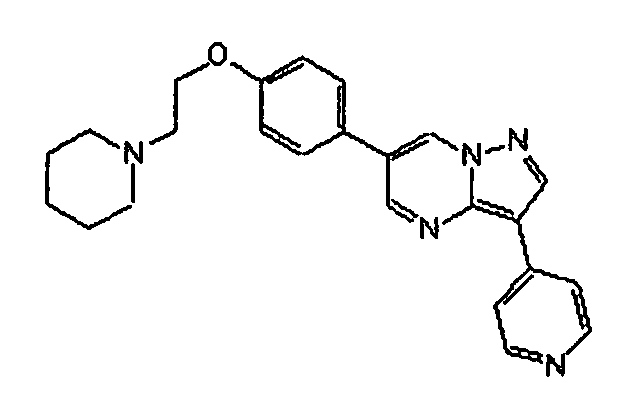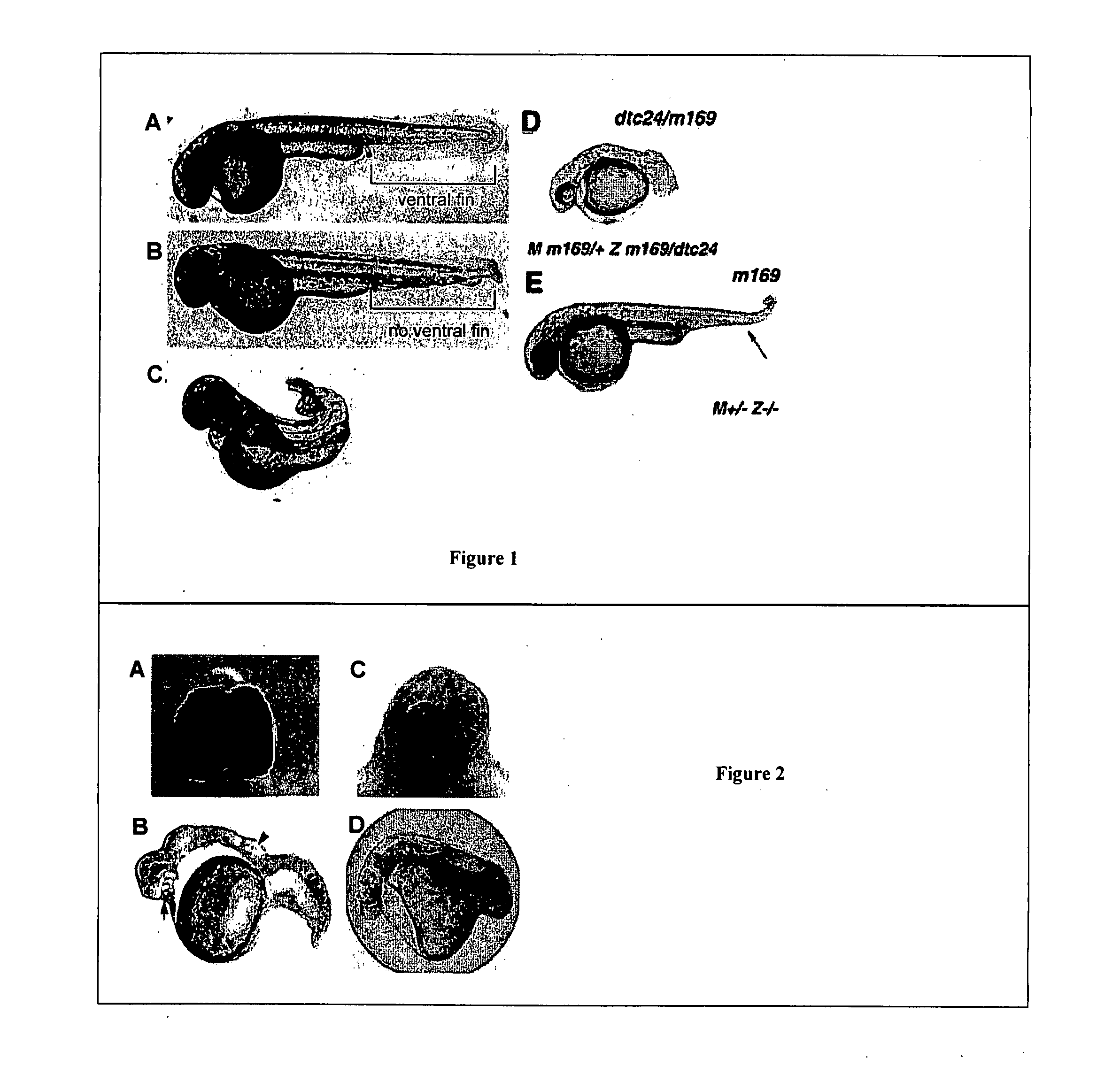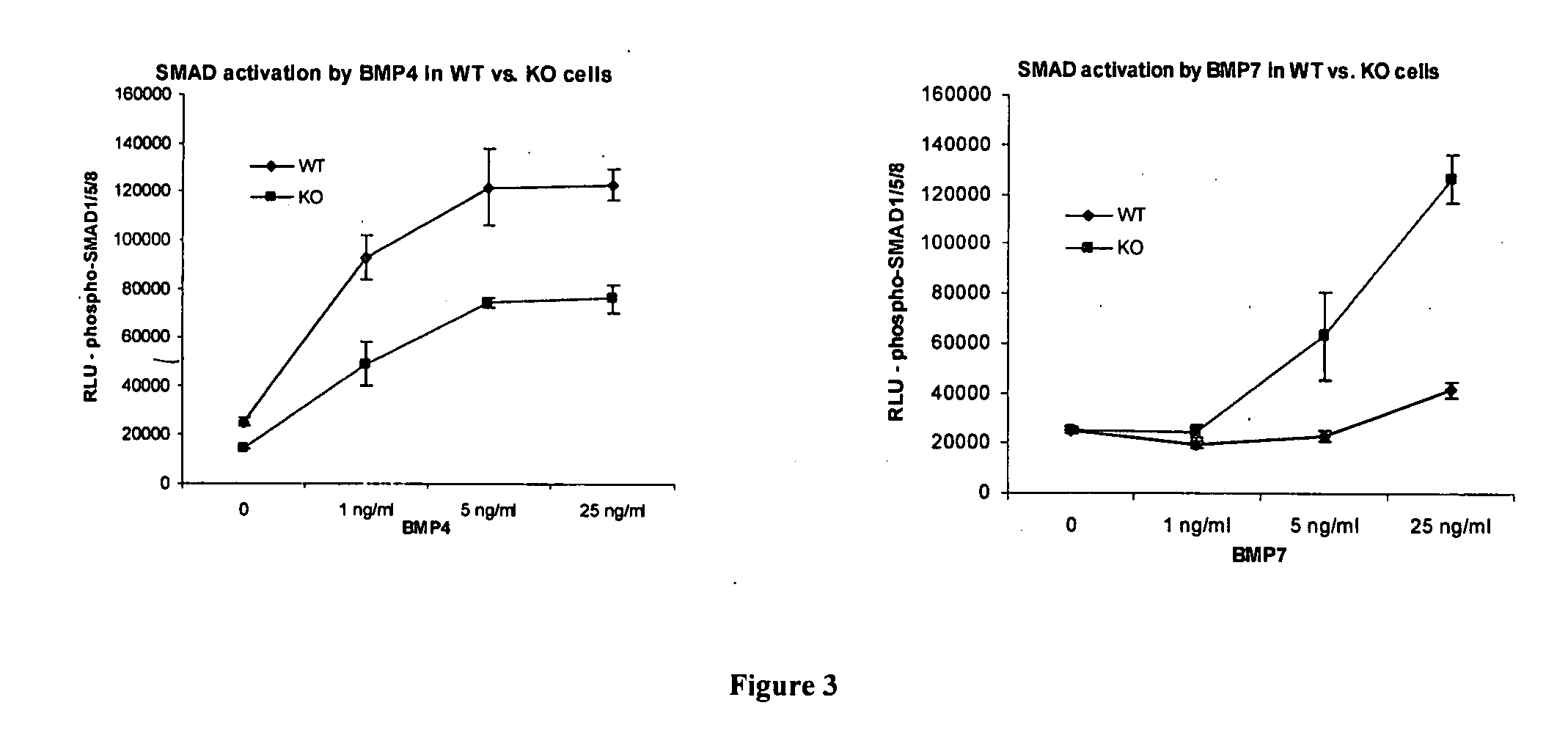Methods for identifying compounds that modulate cell signaling and methods employing such compounds
a cell signaling and compound technology, applied in the field of compound identification methods, can solve the problems of ineffectiveness, inability to inhibit bmp signals via soluble receptors, endogenous inhibitors, neutralizing antibodies, etc., and achieve the effect of facilitating compound identification, high degree of similarity, and facilitating compound identification
- Summary
- Abstract
- Description
- Claims
- Application Information
AI Technical Summary
Benefits of technology
Problems solved by technology
Method used
Image
Examples
example 1
[0088]Using screening methods such as those described above, we have identified a small molecule that preferentially inhibits the activation of SMADs by bone morphogenetic protein ligands. This molecule, Compound C / Dorsomorphin, was previously described as an inhibitor of the activation of AMP kinase signaling pathway (Zhou et al., J. Clin. Invest. 108:1167-1174, 2001; Calbiochem Catalog #171260; Sigma Catalog #P5499; FIG. 5).
[0089]Results of experiments showing the effects of Compound C / Dorsomorphin on BMP and TGF-β activation are shown in FIGS. 6 and 7. As is shown in FIG. 6, we have found that Compound C / Dorsomorphin inhibits BMP signaling, as shown by activation of SMADs 1, 5, and 8 by BMP4, with an IC50 of 0.5 uM (FIG. 6). We also have found that the compound does not affect the TGF-β signaling pathway (FIG. 7). Compound C / Dorsomorphin was previously described to inhibit AMP kinase activity with an IC50 of approximately 15-30 uM (Zhou et al., J. Clin. Invest. 108:1167-1174, 200...
example 2
[0096]Bone morphogenetic protein (BMP) signals coordinate developmental patterning, organogenesis, and tissue remodeling, and play essential physiological roles in mature organisms. Here we describe the first known small molecule inhibitor of BMP signaling, Compound C / Dorsomorphin, identified in a screen for compounds that perturb dorsoventral axis formation in zebrafish. Exposure to Compound C / Dorsomorphin during early embryogenesis recapitulated a full spectrum of dorsalization defects associated with genetic disruption of BMP signaling and also compensated for knockdown of the endogenous BMP antagonist chordin. Compound C / Dorsomorphin was found to selectively inhibit BMP type I receptors ALK2, ALK3, and ALK6 and thus block BMP-mediated SMAD1 / 5 / 8 phosphorylation, target gene transcription, and osteogenic differentiation. Using Compound C / Dorsomorphin, we examined the role of BMP signaling in iron homeostasis in zebrafish and mice. In vitro, Compound C / Dorsomorphin inhibited BMP-, ...
PUM
| Property | Measurement | Unit |
|---|---|---|
| Fraction | aaaaa | aaaaa |
| Fraction | aaaaa | aaaaa |
| Molar density | aaaaa | aaaaa |
Abstract
Description
Claims
Application Information
 Login to View More
Login to View More - R&D
- Intellectual Property
- Life Sciences
- Materials
- Tech Scout
- Unparalleled Data Quality
- Higher Quality Content
- 60% Fewer Hallucinations
Browse by: Latest US Patents, China's latest patents, Technical Efficacy Thesaurus, Application Domain, Technology Topic, Popular Technical Reports.
© 2025 PatSnap. All rights reserved.Legal|Privacy policy|Modern Slavery Act Transparency Statement|Sitemap|About US| Contact US: help@patsnap.com



